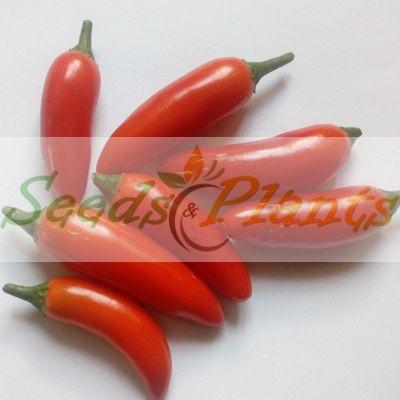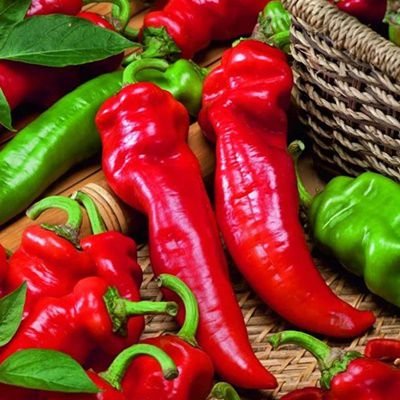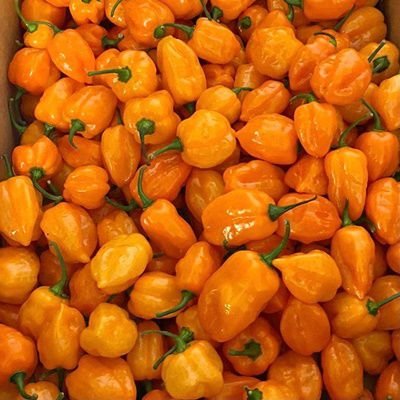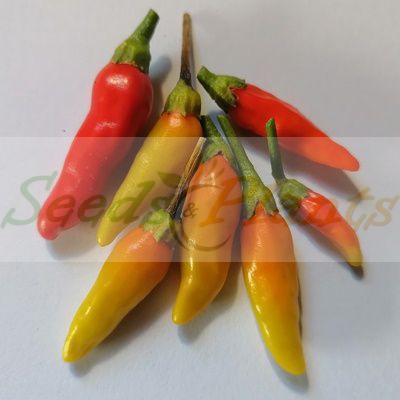Serrano Chilli Pepper – 20 Seeds
(Scoville heat units: 5,000 to 10,000)
R30.00
The Serrano Chilli Peppers are fleshy and meaty with the unique Serrano flavor so popular in Mexican cuisine. This traditional Mexican salsa chilli is called for in many recipes; it is eaten fresh and used in many sauce recipes.
Seed Type: Organic – Harvested from our own plants.
Indoor Sowing: Mid Winter, Late Winter and Early Spring.
Direct Sowing: Not Recommended.
In stock
The Serrano chilli pepper, meaning ‘from the mountains’, is native to Mexico and south-west America. The abundant candle-flame shaped fruit up to 9cm long and 2cm wide. The fruits are green, then red at full maturity and are borne on attractive 75 to 90cm erect, branching plants.
Serrano peppers are fleshy and meaty with the unique Serrano flavor so popular in Mexican cuisine. They look like slender Jalapeños, but are a little hotter at 5,000 to 10,000 SHU. This traditional Mexican salsa chilli is called for in many recipes; it is eaten fresh and used in many sauce recipes. The red chilies are usually a little sweeter, they are often be threaded on string and dried as a colorful ornament.
The Serrano chilli pepper plant adapts easily to different climates and altitudes, which allows it to be cultivated in many regions. Upright, hairy and woody-stemmed, the plant that is also hardier than most chilli varieties, making it a good choice for overwintering. A vigorous bearer, the fruits reach full size in 75 days from potting on.
Unripe serrano peppers start out green in color and will typically grow to 3 or 4 inches in length on the plant. As with any chili pepper, you can pick and eat them at anytime in the growing process, though the flavors will change as they ripen. Eventually the serrano pods stop growing and will then change color, from green to red, brown, orange or yellow. After that they will fall off of the plant and can even rot on the plant, so it is best to pick your serrano peppers while they are still green or as they begin to change color. They are slightly sweeter in flavor, and the colors can make a dish truly pop with visual interest.
Growing Serrano Chilli Pepper
Indoor Sowing: Mid Winter, Late Winter and Early Spring.
Direct Sowing: Not Recommended.
- Sow seeds indoors in Mid Winter, Late Winter or Early Spring.
- Soak your seeds overnight in warm water to help them germinate faster.
- Place the seeds on top of the growing medium and cover with a thin layer of soil.
- Mist the soil with water daily so that it stays moist.
- For best germination, keep the soil between 23 and 26 degrees Celsius.
- The pots won’t require light until the seeds sprout.
- Sweet Pepper seeds germinate in about 30 days and Hot Pepper seeds in about 60 days, but it can also take longer.
- After the seeds have germinated, place the pot on a windowsill or in a heated greenhouse.
- When they are 2.5cm tall prick out seedlings, moving each into their own 10cm pot. Make sure the roots are well covered and the leaves are just above the surface of the soil.
- Water and place in a light spot indoors.
- While plants are still growing indoors, move into 13cm pots filled with general purpose compost when roots begin to show through the drainage holes in the base.
- When plants are about 20cm tall, or before if they start to lean, stake with a stick.
- Pinch out the tops of peppers when they are about 30cm tall to encourage lots of branches.
- Plants are ready to be placed outdoors once all danger of frost has passed.
- Either plant directly into the ground, spacing them 45cm apart or transfer them to 22cm pots to give them plenty of space to grow.
- Peppers take a long time to grow large enough from seeds to produce mature fruit, and they require a fairly long growing season.
- Make sure you water regularly, especially in hot weather and feed every two weeks with a general purpose liquid fertilizer. Feeding should start when the flowers first appear and should continue until the fruit have been harvested.
Disclaimer
Medicinal Information:
All medicinal information on this website is for educational and informational purposes only and may not be construed as medical advice. The information is not intended to replace medical advice or treatment offered by healthcare professionals.
Seeds, Plants, Plant Cuttings, Geophytes and Dried Herbs:
In some countries and provinces, certain plants are deemed as invasive and are not allowed to be planted at all, whilst some plants are allowed to be grown only in certain areas or provinces. The onus is on you as the buyer to familiarize yourself with the regulations pertaining to your location, before purchasing any of our seeds, plants, plant cuttings, geophytes or dried herbs. We will not be held liable, should you purchase any seeds, plants, plant cuttings, geophytes or dried herbs. from us which are prohibited in your country or province.

















